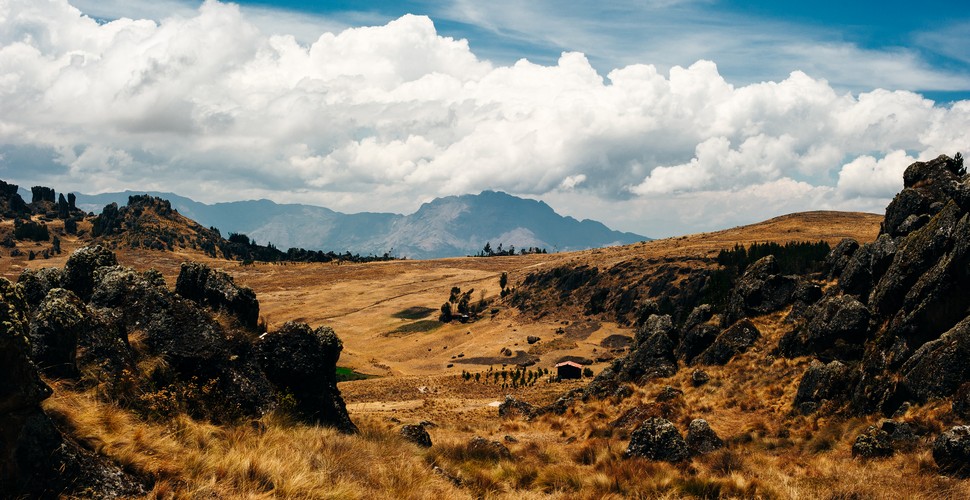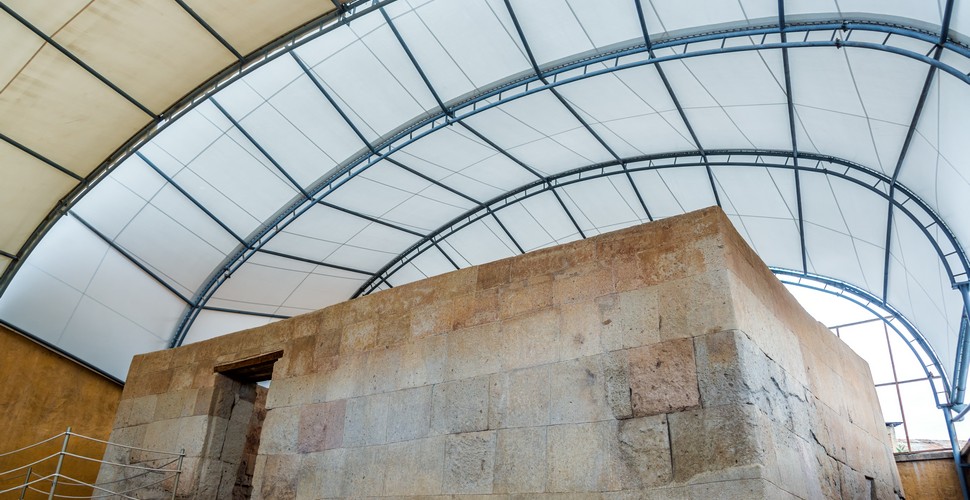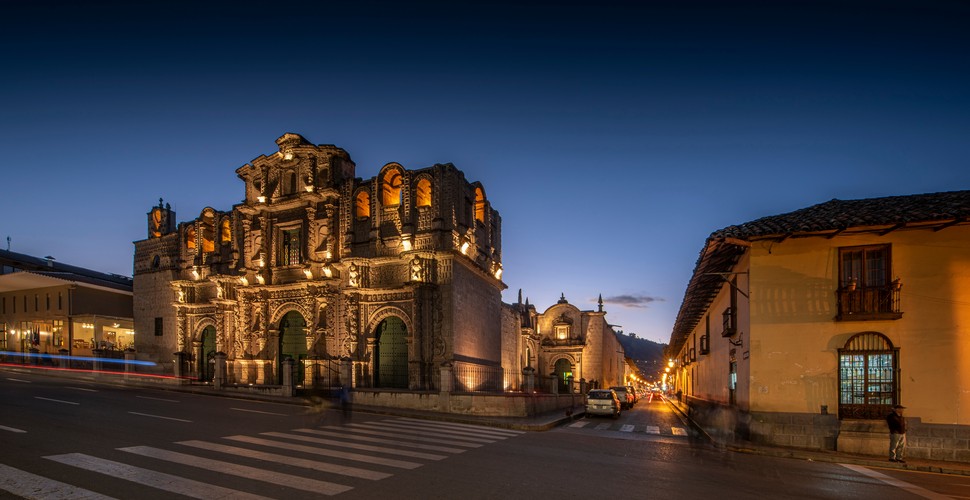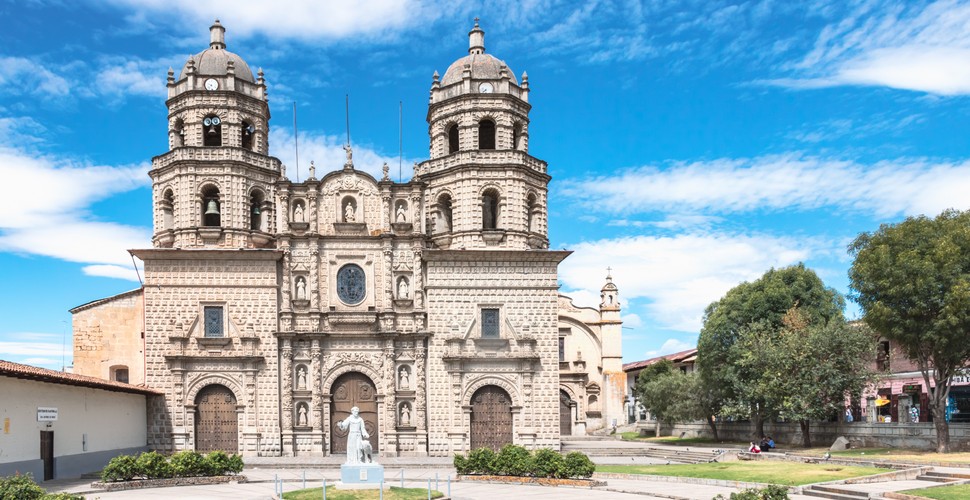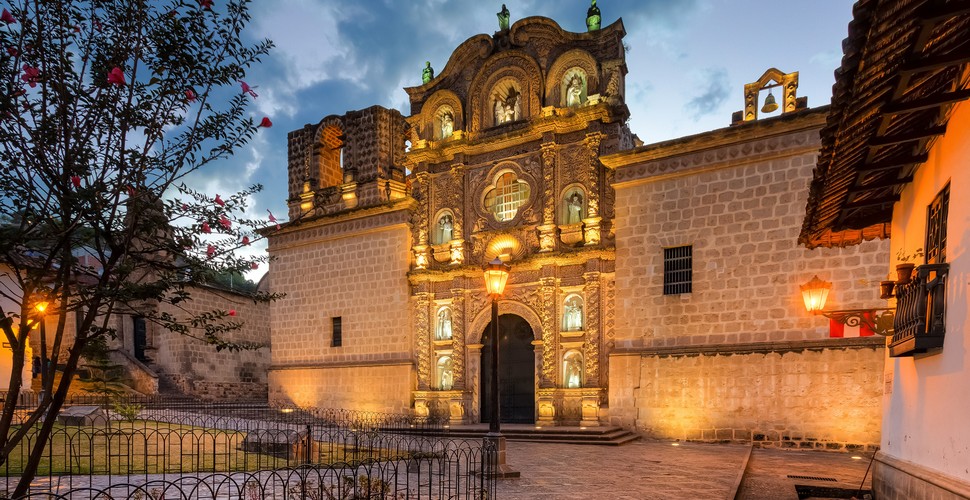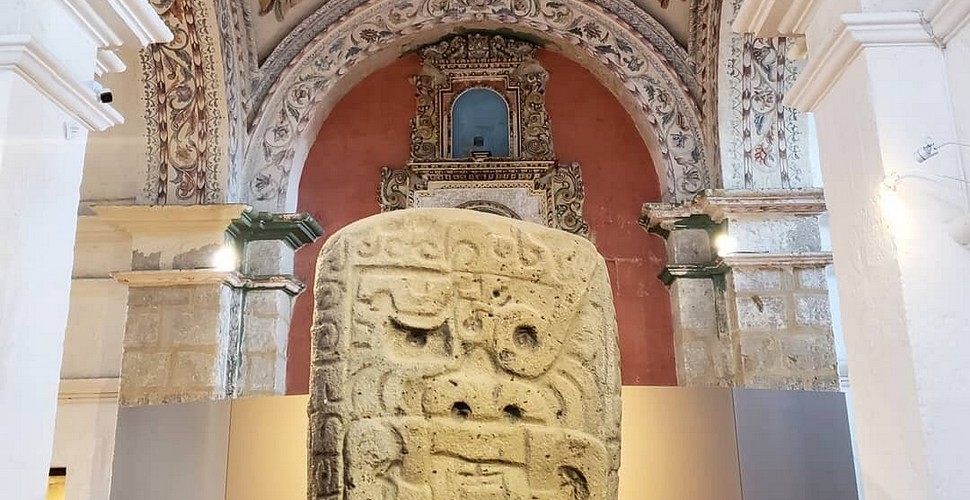

Claire Dean
Travel in South America is a joy to behold. The rich variety of destinations, experiences, landscapes and geography fascinated me so much, that I chose to relocate here, over 20 years ago! The best thing I ever did! Allow me to share my knowledge and passion for Central and South America with you and help you plan your holiday of a lifetime!

Why Should I visit Cajamarca in Peru?
Written by:Claire Dean
Published: 2023-03-06
Located at an altitude of 2,720 m and with a very pleasant climate, Cajamarca is the place where the Inca and Spanish cultures came together. Cajamarca has one of the most important colonial architectural patrimonies of Peru. In 1986, UNESCO named Cajamarca a site of historical and cultural heritage of the Americas. The Cajamarca region is located inland in northern Peru. It is neighbors to the west with the coastal regions of Piura, Lambayeque, and Libertad. To the east are the regions of Amazonas and San Martín. Cajamarca extends north to the Ecuadorian border. Enjoying a privileged climate, it is the most wooded mountainous region, as well as the first region producing cattle and dairy products in Peru. The tourism sector generates important resources for the region. This adds to the resources of agriculture and the mining industry. With the Yanacancha mine, Cajamarca has the largest gold mine in South America.
Cumbemayo
The History of Cajamarca
It was in Cajamarca that the meeting between Inca Atahualpa and the Spaniards of Francisco Pizarro took place in November 1532. A meeting that would change history. This organized meeting will mark the beginning of the end of the Inca Empire and the advent of Spanish rule over a large part of the South American continent.
The 180 Spanish trapped the Inca and his army of 40,000 men! An incredible feat that led to the massacre of the Incas. Who would have foreseen that the Inca would throw the Bible to the ground saying that he did not fear the word of God? Pizarro and his men demand from the Incas the payment of a ransom. In fact, near the Plaza de Armas, one of the largest in Peru, is the famous “rescue” room. The Inca Atahualpa had to fill this room with gold and silver to pay his ransom, the most expensive in history. The Spanish condemned the powerful sovereign to death. The rescue room is the only vestige of the Inca culture in Cajamarca. The room is sacred, so you cannot enter and there is blood on the stone where Atahualpa was executed. Read on for more fascinating details about Cajamarca in he North of Peru!
The Ransom Room
What To Do in the Cajamarca Region?
The Ransom Room (Cuarto del Rescate)
The only Inca construction still standing in Cajamarca, is where the last Inca ruler Atahualpa, was imprisoned. The small room has three trapezoidal doorways and a few similarly shaped niches in the inner walls, recognizing it as an Inca construction. Visitors are not allowed to enter the room, but from outside it's possible to observe the red line marking the original ceiling of the structure. This was the point to which the room was to be filled with treasure to secure Atahualpa's release. The sophistication of the construction of the Cuarto del Rescate and the way the stones fit together so perfectly that no mortar is needed exceeds the ability of modern western masonry construction.
The Cathedral
The cathedral is a good example of the Peruvian Baroque, also called the Mother Church of Santa Catalina. Its construction took 80 years and its facade was not completed. This ornate building began its construction in the late 17th century and was only recently finished. Although only a church when it was built in 1665, it was elevated to the category of a Cathedral in 1685. The facade is carved from volcanic stone. It is considered one of the best examples of Peruvian Baroque architecture in Peru. Like most of Cajamarca’s churches, the cathedral has no belfry, due to the Spanish Crown introducing a tax on finished churches. This is why many churches in Cajamarca were left unfinished and thereby avoiding the tax. The church's interior lacks the finery and ornamentation of its exterior, somewhat, until you reach the rich baroque altarpiece covered in gold leaf.
The Cajamarca Cathedral
The San Francisco Church
The San Francisco Church was built in the seventeenth century. The church has catacombs in which the Franciscan friars were buried together with members of the nobility. Overshadowing the cathedral on Plaza de Armas, this elaborate church with striking stone carvings and decadent altars, is unlike other illustrious Cajamarca churches, because the San Francisco Church, has two belfries. It was constructed in part from stones removed from the House of Snakes Temple on Mirador Santa Apolonia. The first version of the convent on site was completed in 1562, by Franciscan monks. It houses the Museo de Arte Religioso full of 17th-century religious paintings by indigenous artists. The museum includes some catacombs, where in one room you can witness the tombs of monks, and in another, are skeletons recovered from Indigenous graves found at the site, lying bare and without ceremony.
San Francisco Church
The monuments of Belén
This building is reminiscent of the “Hôtels-Dieu” in France. Now they are used as exhibition sites. The construction of the sprawling Belen colonial complex, including a church and hospital made entirely from volcanic rock, occurred between 1627 and 1774. The hospital was run by nuns and 31 tiny, cell-like bedrooms line the walls of the T-shaped building. The baroque church next door is one of Cajamarca’s finest and has a stunningly carved pulpit. Art exhibitions regularly decorate the walls inside the church, adding to its stunning decor.
Belen Church
The Inca Chair
To have the most beautiful panorama of the city and the whole valley, there is nothing better than the Santa Apolonia hill. Previously called Rumi Tiana, which means “stone seat” in Quechua, there are some vestiges of prehispanic buildings and the so-called “Inca chair“, which is formed as an ancient throne carved into the rock.
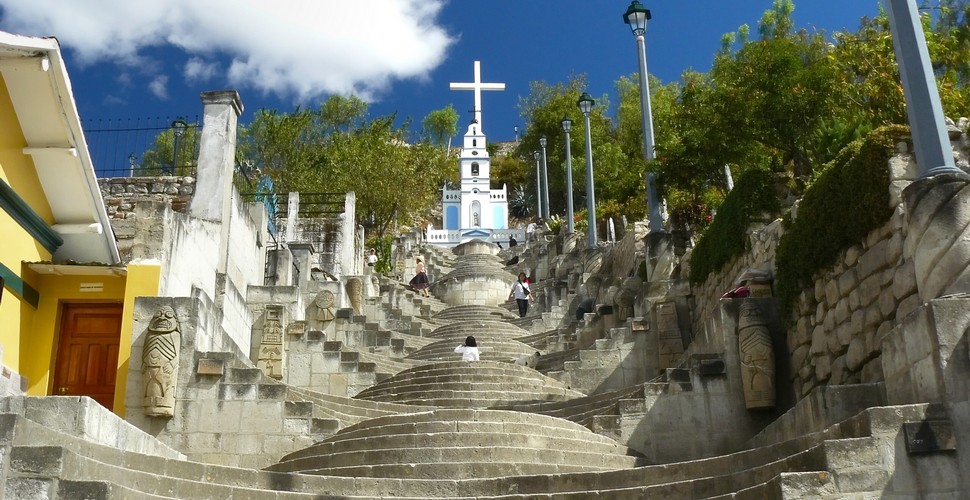
Santa Apolonia hill
Visit The Inca Baths
The Inca Baths are located approximately 6 km from the city of Cajamarca at 2500 meters elevation. The amazing aspects of this medicinal spa, are the various pools of therapeutic waters, offering relief for the mind, body, and soul. Since pre-Inca times, these thermal baths were visited by the local elite. Today you can learn all about the history and relax in the healing properties of its waters. Legend says that the Inca Atahualpa rested there shortly before his confrontation with Pizarro and his subsequent demise.
Cumbemayo
Cumbemayo an area believed to be dated back to 1500 B.C., and is one of the oldest man-made constructions in all of South America. The most impressive structure at this site is the aqueduct that runs 8 kilometers (5 miles), bringing water from the hills to the city of Cajamarca. The Cumbemayo archaeological complex is located approximately 20 kilometers from the City of Cajamarca and is found at an elevation of 3,500 meters. The Cajamarca people worshipped rain, thunder, lightning, the sun, and the moon. That makes sense since they were an agricultural economy. They also used barter for trade. In Cumbemayo we can witness find a magical stone forest with gigantic stone figures called “friars” because it resembles a group of hooded friars. Also found at the site are petroglyphs, the tunnel, ceremonial altars, and the sacrificial stone. The aqueduct also stands out, an impressive work of hydraulic engineering dating back more than 3,000 years.
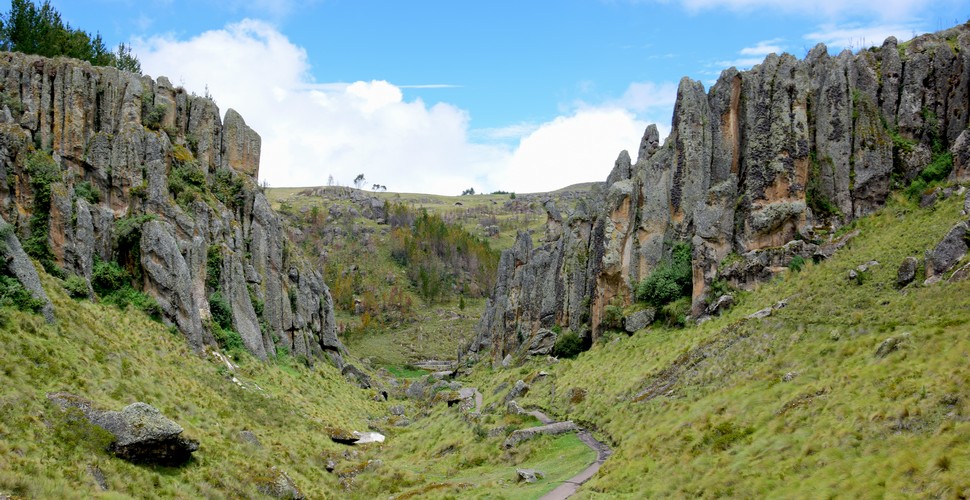
Cumbemayo
The Otuzco Windows
The Otuzco archaeological site is found just north of Cajamarca. Made of volcanic rock, The Otuzco Windows are actually a ceremonial burial site, where you can see hundreds of windows and individual funerary intrusions that resemble windows that are approximately 8 to 10 meters deep. This ancient cemetery belongs to the Cajamarca Culture, who used to bury their deceased in crevices excavated in the rock, generally known as “windows”. Along the way, we can appreciate the picturesque landscapes of the Cajamarca countryside and the setting of these remarkable windows.
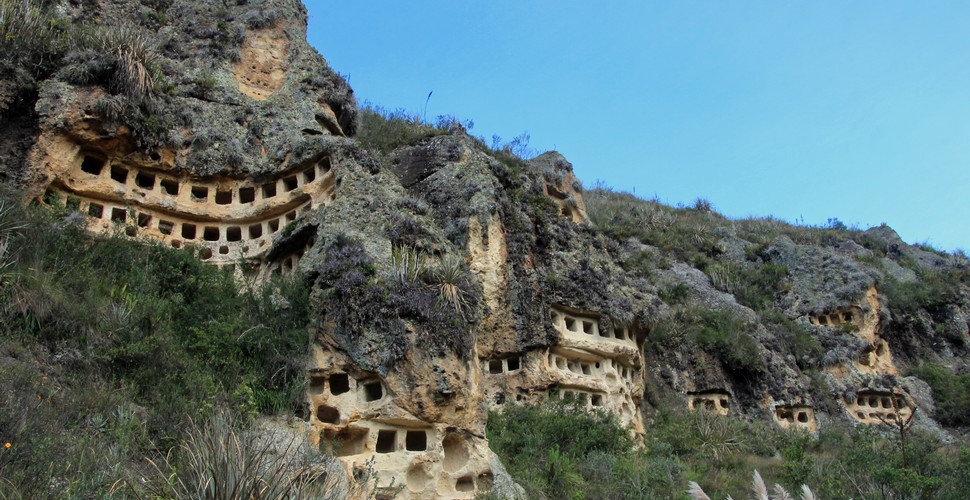
Otuzco Windows
Archaeology and Ethnicity Museum
This small museum has exhibits of pre-Columbian pottery and stone statues, as well as displays of local costumes and clothing, domestic and agricultural implements, and musical instruments. The most disturbing exhibit is the mummified remains of a baby in a ceramic vase. The museum is housed inside the Antigua Hospital de Mujeres, just a few meters from The Belen Archaeological Complex. The ornate facade has a fascinating statue of a woman with four breasts, carved by local artisans, which supposedly represents a commonly found affliction in one of the nearby communities.
Archaeology and Ethnicity Museum
We hope that this blog is the perfect introduction to the Northern City of Cajamarca! Steeped in history, this city was the point that saw the demise of the Inca Civilization. If you have inspired to visit Cajamarca on your Peru vacation package, contact Valencia Travel Cusco, and we can arrange a visit to all the strategic and interesting areas inside the city walls, and even further afield. Visit Cajamarca on your vacation to Peru! book here!


